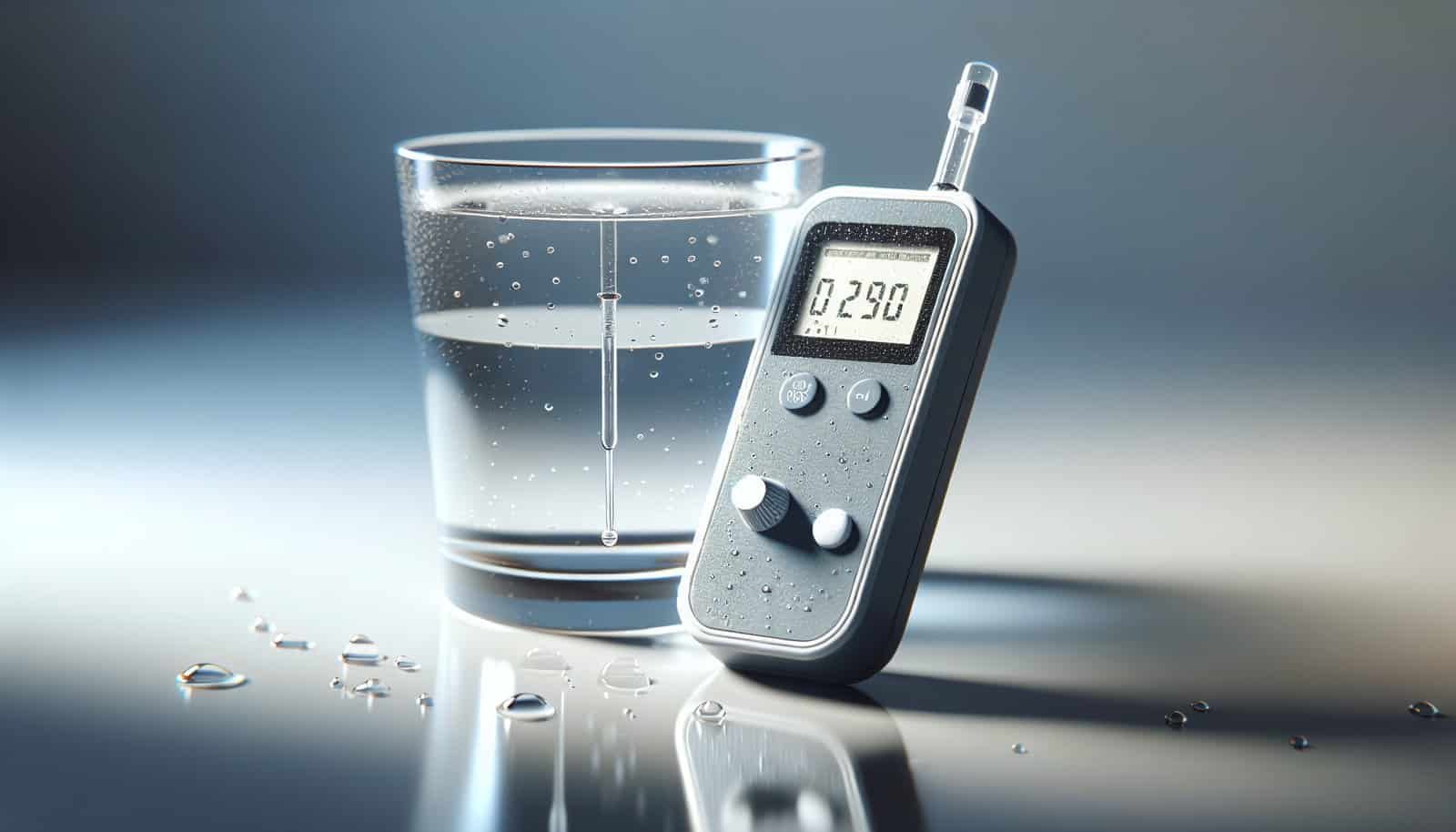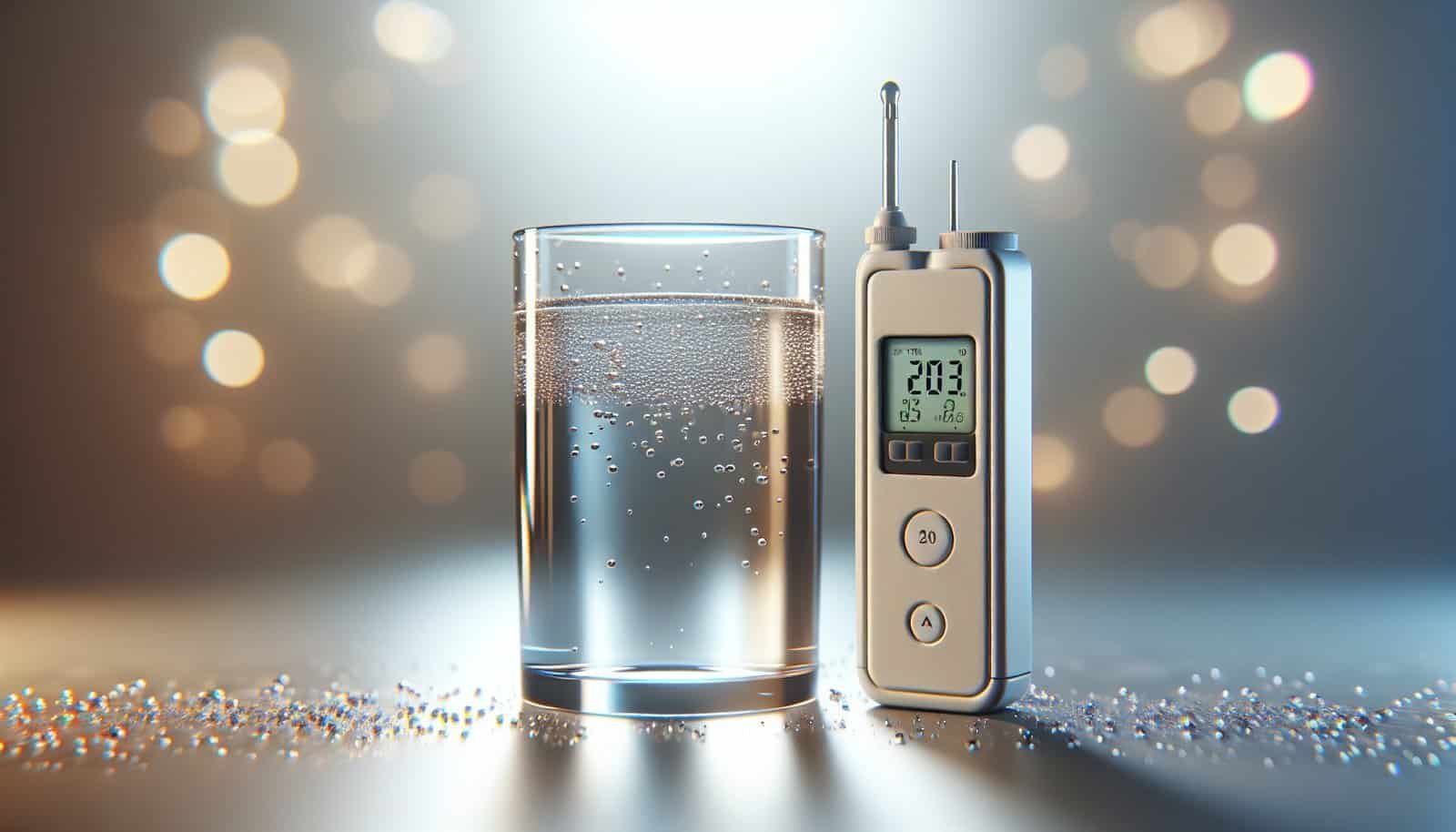Are you worried about the safety and quality of your water between scheduled lab tests?

How Do I Monitor Water Quality Between Lab Tests?
You want practical ways to check your water so you can act quickly if something changes. This section gives you a framework for sensible, regular checks you can do at home or with low-cost tools to bridge the gap between professional lab analyses.
Why monitor between lab tests?
Lab testing gives you a detailed snapshot, but it only captures conditions at one moment in time. You need interim monitoring because contamination events, seasonal changes, and equipment failures can occur any time and you want to catch them early.
What are the main parameters to track?
Some parameters change slowly and others can shift quickly after an event like heavy rain or pump repairs. Focus on parameters that are affordable to monitor and that indicate potential health risks or system failure: appearance, odor, pH, turbidity, chlorine, conductivity/TDS, nitrate/nitrite, iron, and the presence of coliform bacteria.
Simple daily and weekly checks you can do yourself
You don’t need to be a scientist to notice obvious changes in your water. Regular sensory checks and a few inexpensive instruments give you a first line of defense.
Visual, smell, and taste checks
Look for color changes, cloudiness, particles, or visible oil films and smell for sulfur (rotten egg), chlorine, or musty odors. If your water tastes metallic, salty, or otherwise unusual, treat it as a warning sign and investigate further.
Temperature and flow checks
Note sudden drops in flow rate or changes in water temperature that aren’t explained by weather or household use. These can indicate pump problems, well yield changes, or seasonal influences that may affect water quality.
Frequency and record-keeping
Check sensory signs daily if you rely on a private well, and log results in a simple notebook or spreadsheet. Consistent records help you spot trends and provide useful context if you need to report a problem to a lab or local health department.
Low-cost instruments and kits for routine monitoring
You can buy tools that give you quick quantitative insights without waiting for lab results. These tools vary in cost, accuracy, and what they measure.
Test strips and colorimetric kits
Test strips and colorimetric kits are inexpensive and fast for parameters like pH, chlorine, hardness, iron, nitrate, and total alkalinity. They aren’t as precise as lab methods, but they’re excellent for screening and identifying when to escalate testing.
TDS meters and conductivity meters
Total Dissolved Solids (TDS) meters measure conductivity and give a quick indication of mineral content or unusual increases in dissolved substances. Use a TDS meter weekly or whenever you notice taste changes or scaling in appliances.
Turbidity and simple particle tests
Handheld turbidity tubes and simple turbidity meters let you check cloudiness, which often correlates with microbial contamination risk. If turbidity increases, you should avoid drinking the water until you confirm safety, because particles can shield microbes from disinfection.
Portable electronic testers
Portable pH meters, ORP (oxidation-reduction potential) meters, and digital chlorine sensors give more accurate readings than strips. They require calibration and maintenance, but they’re valuable if you want reliable interim monitoring.
How do I identify coliform bacteria in well water?
Detecting coliforms requires either home presence/absence kits or sending a sample to a certified lab for quantitative testing. This section helps you recognize signs of contamination and choose monitoring methods.
What are coliform bacteria and why they matter
Coliforms are a group of bacteria found in the environment, including soil, vegetation, and the intestines of warm-blooded animals. The presence of coliforms in your well indicates possible pathways for fecal contamination or surface water intrusion, which may allow serious pathogens like E. coli to enter your water.
Home presence/absence test kits
Presence/absence kits are inexpensive and easy to use: you add a reagent to a water sample and incubate at a specified temperature, then look for color change or turbidity that indicates growth. These kits can tell you if coliforms are present but usually won’t quantify how many bacteria are in your water.
DIY interpretation and limitations
A positive result on a home kit means you should stop drinking the water until you confirm results with a certified lab and consider immediate corrective actions. Home kits can give false positives or negatives due to improper sampling, incubation conditions, or interference, so they are best used as a screening step rather than a definitive diagnosis.
When to send a lab sample for coliform testing
Send a sample to a certified lab if a home test is positive, if household members have unexplained gastrointestinal illness, or if you notice sudden changes after heavy rainfall, well work, or flooding. A lab will use membrane filtration or multiple tube fermentation to confirm and quantify coliforms and test specifically for E. coli.

Proper sampling techniques for reliable results
How you collect a sample affects its usefulness. Follow careful sampling steps to avoid contamination and get actionable results from labs or home kits.
Preparing for sample collection
Sanitize the tap by removing screens and aerators and rinsing, then run the water for several minutes to flush the system. Wear clean gloves or use clean hands, and always use sterilized bottles provided by the lab or kit.
Sterile sample collection steps
Collect the sample midstream if possible, holding the bottle to avoid touching the inside or cap, and fill to the indicated volume without rinsing the bottle unless instructed. Seal the bottle tightly, keep it cool (but not frozen), and deliver it to the lab within the recommended time window—usually within 24 hours for bacteria.
Labeling and documentation
Label each sample with date, time, source (kitchen tap, well head, etc.), and your contact details. Provide the lab with any relevant context such as recent heavy rain, pump failure, or treatment changes so they can interpret results accurately.
What to do if a coliform test is positive
A positive coliform result requires quick action to protect your health and address the source. This section guides you through immediate steps and longer-term responses.
Immediate protective measures
Stop drinking the water and use an alternative safe source for drinking and cooking—bottled water or boiled water for at least one minute is recommended. Use caution for brushing teeth and preparing infant formula; avoid using the water for these purposes until you are certain it’s safe.
Temporary disinfection: boiling and chlorination
Boiling for one minute at a rolling boil (three minutes at high altitude) will kill bacteria and most pathogens. Shock chlorination of the well system can disinfect it, but it’s complex and may require a professional; follow guidance from local health authorities or the well manufacturer.
Professional inspection and corrective actions
Contact a qualified well contractor or your local health department to inspect well integrity, casing, caps, vents, and nearby contamination sources like septic systems. Reconstruction of the well seal, re-grouting, or addressing surface drainage or nearby animal access may be necessary.
Follow-up testing
After any remedial work or disinfection, get a lab-confirmed follow-up test to ensure the coliforms are gone. Some protocols require multiple negative tests over time before you consider the problem resolved.

Maintaining your well to reduce contamination risk
Prevention and routine maintenance reduce the likelihood of contamination events between lab tests. Good practices extend the life of your well and protect your water.
Physical protection and site maintenance
Ensure well caps are secure, vents are screened, and the area around the well slopes away to keep surface runoff from pooling. Keep livestock and chemicals away from the wellhead, and maintain a clean radius around the well of at least 10–20 feet, more if possible.
Sanitary surveys and periodic professional checks
A sanitary survey by a qualified well contractor or public health professional can identify vulnerabilities and recommend fixes. Schedule periodic checks of the pump, pressure tank, and electrical systems so mechanical failures won’t cause water quality problems.
Managing nearby septic systems and land use
Make sure your septic system is functioning properly and is located at a safe distance uphill from your well. Avoid using or storing fertilizers, pesticides, fuels, and manure near the well, and manage stormwater to prevent surface contamination.
Using continuous monitoring and alarms
If you want ongoing reassurance, you can install continuous sensors that alert you to changes in key parameters. These systems offer near-real-time awareness between lab tests.
Types of continuous sensors
Online sensors measure parameters like turbidity, conductivity, pH, and chlorine and can be integrated with telemetry for alerts. These are particularly useful for high-use wells, irrigation systems, or situations where water quality is critical for health or business operations.
Pros and cons of continuous systems
Continuous monitors give early warning of sudden changes but require power, calibration, and interpretation, and they don’t replace periodic lab tests for pathogens. They are worth considering if you want immediate alerts and have the budget and technical capacity to maintain them.

Interpreting results and deciding when to act
You need a clear threshold for action based on what the tests indicate. This section helps you translate readings into decisions.
Understanding normal ranges and action levels
Look up state or EPA advisory levels for parameters like nitrate (10 mg/L as nitrate-nitrogen for the U.S. EPA is 10 mg/L as nitrate-N or 45 mg/L as nitrate? clarify local standards), but remember that standards for taste and aesthetics can be stricter. For bacteria, any confirmed total coliforms or E. coli typically triggers immediate response and follow-up testing.
(Note: Always verify current numerical standards with local authorities; national guidance can change and may vary by location.)
When a single abnormal result matters
A single high reading for a chemical like nitrate or a bacterial positive is actionable because of health implications, especially for infants, pregnant women, or people with compromised immune systems. Repeat or confirmatory tests help determine whether the issue is persistent, seasonal, or a sampling artifact.
Trend-based decision making
Small fluctuations are common; focus on trends rather than single minor changes unless they cross known health thresholds. Keeping records will help you determine if an intervention is needed and whether previous fixes were effective.
Common contaminants, their signs, and recommended checks
Knowing what to look for helps you prioritize testing based on the risks near your property. Below are the typical contaminants private well owners face.
Microbial contaminants (coliforms, E. coli)
Signs include cloudy water, sudden taste or odor changes, and household gastrointestinal illnesses. Test with presence/absence kits for screening and send samples to a lab for confirmation, particularly for E. coli.
Nitrate and nitrite
Nitrate sources include fertilizer, septic systems, and animal waste; infants are especially vulnerable to nitrate-related health effects. Use test strips or lab tests periodically and after nearby agricultural activity or septic work.
Iron and manganese
Iron often causes reddish-brown staining and metallic taste, while manganese can cause black staining and a bitter taste. Test with home kits for screening and consider water softeners or oxidation/filtration systems for treatment.
Hydrogen sulfide
A rotten-egg odor is the hallmark of hydrogen sulfide. It is primarily an aesthetic issue at low levels but can corrode plumbing; testing and aeration or filtration systems can address it.
Hardness and scaling
Hard water creates scale on fixtures and reduces appliance efficiency. Use a hardness test kit and consider a water softener if levels are high.
Chloride and sodium
High chloride and sodium can result from road salt, water softeners, or seawater intrusion. These affect taste and may have health implications for people on low-sodium diets.
Pesticides and VOCs
If you live near agricultural areas, test for common pesticides; if you are near industrial sites or fuel storage, test for volatile organic compounds (VOCs). Lab tests are required for reliable results.

Table: Common home tests — what they tell you and how often to run them
| Parameter | What it indicates | Recommended frequency | Typical home tools |
|---|---|---|---|
| Visual, smell, taste | Immediate obvious contamination | Daily to weekly | Sensory checks |
| Total coliform/E. coli | Microbial contamination risk | Monthly or after events; immediate if symptoms | Presence/absence kits, lab tests |
| TDS/conductivity | General mineral/contamination indicator | Monthly | TDS meter |
| pH | Corrosivity and treatment effectiveness | Monthly | pH strips or meter |
| Turbidity | Particle load, microbial risk | Weekly or after heavy rain | Turbidity tube, meter |
| Nitrate/nitrite | Agricultural/septic contamination | Annually or after nearby fertilizer use | Test strips, lab |
| Iron/manganese | Staining and taste issues | Annually | Colorimetric kits, lab |
| Chlorine | Disinfection in treated supplies | Weekly if chlorinated | DPD test kit |
| Hardness | Scaling and soap efficiency | Annually | Test strips |
| VOCs/pesticides | Industrial/agricultural contamination | As needed based on risk | Lab tests |
Make sure you match frequency to your local risk level and budget. If you notice changes, increase testing frequency until you resolve the issue.
Troubleshooting common test and monitoring problems
Home testing is useful but imperfect. Understanding common issues reduces false alarms and missed problems.
Avoiding sampling contamination
Don’t touch the inside of a sterile bottle, and avoid collecting samples from garden hoses or poorly sanitized taps. Use lab-provided bottles and follow instructions strictly to avoid false positives.
Calibration and storage issues
Meters and electronic sensors need calibration and proper storage; test strips have expiration dates and degrade if stored in humid conditions. Replace consumables on schedule and note calibration dates in your logbook.
Interference and misleading results
Iron, chlorine, and organic matter can interfere with colorimetric assays or cause false turbidity readings. When results seem inconsistent, repeat the test and consider sending a sample to a lab for confirmation.
Practical action plans for common scenarios
Have simple, clear action plans so you know what to do when a test indicates a problem. These plans reduce panic and speed corrective action.
Scenario: Positive coliform but no illness
Stop drinking and cooking with the water, use bottled or boiled water, and contact your local health department or a certified lab for confirmatory testing. Consider shock chlorination and a well inspection as next steps.
Scenario: Sudden cloudy or discolored water after rain
Avoid using the water for drinking and food preparation until you test turbidity and bacteria. Flush the system, retest, and inspect the well area for surface runoff or erosion pathways.
Scenario: Elevated nitrate reading
Avoid giving the water to infants and pregnant women until you have lab confirmation and advice. Investigate nearby fertilizer use, septic drains, or changes in groundwater flow and consider treatment options like reverse osmosis or ion exchange.
Scenario: Ongoing minor taste or odor issues
If the problem is aesthetic and not linked to pathogens, you may opt for point-of-use filters or whole-house treatment. Still get periodic lab testing to ensure no underlying microbial contamination.
Treatment options you can use between tests
Interim or permanent treatment options vary by contaminant and budget. Some are short-term emergency measures; others are long-term solutions.
Point-of-use filters and boiling
Boiling is an immediate, effective temporary measure for microbial contamination. Point-of-use filters (activated carbon, certified microbiological filters) can improve taste and remove certain contaminants but choose a certified device for microbiological removal if you need pathogen protection.
Shock chlorination of wells
Shock chlorination is a common remedial approach if you detect bacterial contamination and is often performed by homeowners following guidance. It requires correct concentrations and contact times; improper use can damage equipment or be ineffective, so follow authoritative instructions or hire a professional.
Physical filtration and treatment systems
Sediment filters, iron filters, water softeners, and reverse osmosis systems address specific chemical issues and should be sized and installed properly. Maintain and replace media and cartridges on schedule to avoid reduced effectiveness or secondary contamination.
UV disinfection
UV systems inactivate bacteria and viruses if the water is low in turbidity and properly prefiltered. UV disinfection is a strong option for pathogen control, but it requires electricity and routine lamp replacement.
Costs and choosing the right approach
Budget, risk, and convenience shape the monitoring and treatment approach you choose. You want cost-effective steps that give you reliable early warning and protection.
Budgeting for monitoring and testing
Low-cost test strips and a TDS meter may cost a few dozen dollars and deliver useful screening capability. Certified lab tests for bacteria and chemicals can range from $25–$200 per test depending on the analysis, so reserve lab testing for confirmatory and regulatory needs.
Choosing between DIY and professional help
Use DIY tools for screening and when you need quick answers, but rely on certified labs and professionals for confirmation, remediation, and major system work. If your household has vulnerable individuals, prioritize professional testing and treatment.
Frequently asked questions (short answers)
You likely have practical questions; here are direct responses to common concerns.
How often should I test for coliforms if I have a private well?
Test at least annually and more often after any well work, heavy rains, or if you notice problems. Increase frequency if anyone in the household has a weakened immune system or there are known local risks.
Can I rely on test strips for bacteria?
No. Test strips are useful for many chemicals but are not reliable for bacteria detection. Use presence/absence kits for screening and labs for confirmation.
Is it safe to boil water every time tests are inconclusive?
Yes, boiling is a simple, highly effective short-term method to kill bacteria and viruses. Use bottled water or properly boiled water until you confirm the issue is resolved.
Will a water softener remove coliforms?
No, water softeners address hardness salts and won’t reliably remove bacteria. You need disinfection or certified microbiological filters for pathogen removal.
Final checklist for monitoring water quality between lab tests
A compact checklist helps you stay consistent and proactive. Follow this list to maintain a reliable interim monitoring routine.
- Run daily sensory checks (look, smell, taste) and note changes.
- Use a TDS meter weekly and test turbidity after rain or pump work.
- Use home coliform presence/absence kits for screening monthly or when suspicious events occur.
- Send samples to a certified lab if a home test is positive, or if gastrointestinal symptoms occur.
- Keep the wellhead area clean, ensure caps and vents are secure, and prevent runoff.
- Maintain records of all tests, maintenance, and unusual events for trend analysis and reporting.
You don’t need to be an expert to keep your water safe between lab visits. By doing regular checks, using low-cost tools wisely, practicing proper sampling, and having clear action plans, you’ll greatly reduce the chance of surprises and protect your household’s health.
